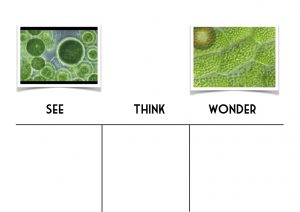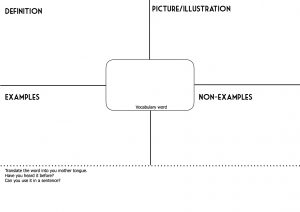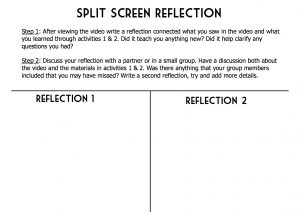For my project, I chose to update “Chemical Reactions: How Can We Slow Climate Change?” The reason that I chose this one is because the final project asks students to pen a letter to their congressman, yet leaves them a little bit unguided in the writing process. The science was all fairly strong, with engaging modules, but some of the information, videos, and especially the writing process needed a freshening up.
First of all, I added a KWL chart to the first module to help guide them in their questioning. (Sabrina, I promise I didn’t copy you! I read yours after had customized my WISE project! Great minds…) The KWL chart is a more guided and structured way for students to think about a topic and try to figure out exactly what they are working with. It also clearly follows the first WISE/SKI principle by making thinking visible (Linn et al. 2003).
Next, I changed the outdated video that was included in the introduction to a more kid-friendly video that is hosted on EdPuzzle. Hosting the video on EdPuzzle allows for the teacher to place commentary over the top of the video, input words to help explain ideas, or ask questions to check comprehension. These abilities will help the teacher to right away get a feel for the room and know what kind of background knowledge they are working with.
Next, I added in a link to a group vocabulary page to which all students can contribute. The spreadsheet was hosted on Google Docs, making it easily accessible to all the students in the classroom. Since I was customizing the lesson with my own students in mind, I know that their vocabulary is lack and they need extra support to help them understand the texts. This EL support is beneficial not only for the EL students, but also for the general populace. The spreadsheet asks them to answer for every word 1) part of speech, 2) definition 3) use in context-rich sentence 4) a picture or link word to help with memory. The collaborative nature of this page is in keeping with the WISE principle of helping students learn from each other (Linn et al. 2003) and also helps to scaffold the writing task that is upcoming at the end (Kim & Hannafin, 2010). Furthermore, this running thread through the assignment is another way to keep the learning cohesive, coherent, and thoughtful, like WISE principles tout.
The final change that I made was including sentence frames and a bit more structure to the writing task to help scaffold that process, as many of the students probably haven’t written a formal letter before and would be unfamiliar with the process and format. While this isn’t necessarily making the “science” accessible, it does make the assignment more accessible for them, thereby meeting the second principle of WISE (Linn et al. 2003) of making science accessible. Also, the sentence frames focus on the effects they see in their own neighborhoods as well, thereby showing personal applications (Slotta & Linn, 2009).
I realize that most of the supports that I added in were language related, not necessarily science related, but again, the reason for that is that the scientific sections were already well made and providing adequate supports for students. Furthermore, with my current group of students in mind, the theories and inquiry would be less of an issue when compared with the writing tasks. Yet, it would require frequent updating to keep the resources up to date and accurate.
References:
Kim, M. C., & Hannafin, M. J. (2011). Scaffolding problem solving in technology-enhanced learning environments (TELEs): Bridging research and theory with practice. Computers & Education, 56(2), 403-417.
Linn, M. C., Clark, D., & Slotta, J. D. (2003). WISE design for knowledge integration. Science education, 87(4), 517-538.
Slotta, J. D., & Linn, M. C. (2009). WISE science: Web-based inquiry in the classroom. Teachers College Press.


